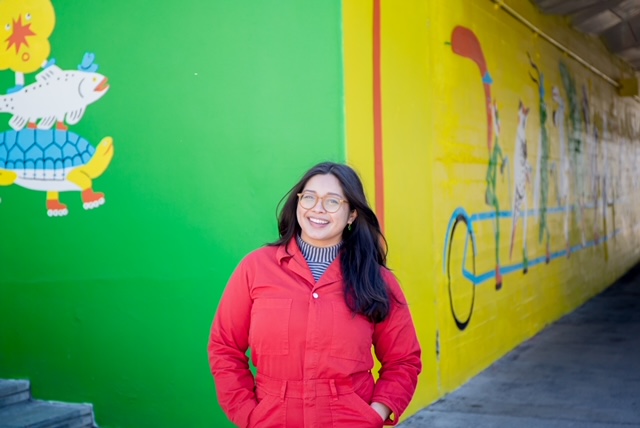What “Great” Public Spaces Do: Redefining the Role of the Guadalupe River Park
 |
| Birds wade through floodwaters north of Coleman Avenue. Photo by GRPC staff. |
The first 6 months of this new decade have redefined the role parks play in our community.
We know (and may take for granted) that parks offer opportunities for recreation, attract development interest, connect people to nature, and promote walking and biking. This precious social infrastructure has also adapted to include new uses: immunity-boosting and mental health healing, supporting essential services (particularly food cultivation and services distribution), providing opportunities for economic recovery, and allowing protestors a safe outdoor place to gather.
The growth in demand and expansion of uses compels us to redefine the role of parks and our role as the community that supports them.
2020 has brought with it unprecedented challenges to our communities, cities, and civics. The COVID-19 health crisis has exposed vulnerabilities in our public health and safety network. The impacts of the pandemic and the necessary shelter-in-place practices have led to an economic downturn and historically high unemployment. The protests following the death of George Floyd, Breonna Taylor, Ahmaud Arbery, and many others have exposed systemic racism and oppression all too familiar for Black people and communities of color.
This follows the ongoing momentum and challenges directly impacting the Guadalupe River Park and its surrounding community. The River Park is geographically central to one of the region’s largest public infrastructure and private development projects in the Diridon Station Area, particularly with BART, California High Speed Rail, and Google’s Downtown West, in addition to a number of other commercial, residential, and transportation investments - embodying the transformation of our city. Yet simultaneously, the impacts of the housing affordability and homelessness crisis have led to a significant houseless population living dangerously close to a river that floods annually, which exacerbates a contentious relationship between encampments and ecology, and leaves many without the dignity of a home.
Our community is faced with navigating uncharted territory, centering collective prosperity around public life, and restructuring our social, civic, and economic systems for equity. We must work towards these goals, keeping in mind the challenges layered by a public health crisis, systemic racism, and economic downturn. With this in mind, it is helpful to audit the social infrastructure and community assets we already possess and invest in them in ways that will translate to the greatest level of community impact. A place to begin is with our parks.
- Do I think parks are the panacea to all of our social ills? No.
- Do I believe they play a part, both in the near and long term, in our community's resilience? Absolutely.
- Are we positioning our parks to be more responsive to the changing and expanding roles they continue to play in our community? This question guides the foundation of this initiative.
The long-term direction of the park will be developed through a visioning and community engagement process in order to better understand how our park can serve the ecosystem of community-based supporters that share a vision for a better River Park. This process will also require GRPC to undertake a certain amount of introspection in order to determine the type of organization that will address the multitude of priorities our park and community have.
Our future success will be dependent on civic partnerships and leveraging the foundation of decades of leadership that continues to propel aspirations and optimism forward for our River Park. Alongside our alliance of community partners including: SPUR, Rotary Club of San Jose, South Bay Clean Creeks Coalition, Urban Confluence, UC Master Gardeners of Santa Clara County, our City and County elected leaders and public officials, neighborhood residents, businesses, cultural institutions, and more; we have confidence to make strides in fulfilling the bold plan for the Guadalupe River Park.
We all have ideas about how a great public space should look. However, this year has taught us that reframing the discussion from what a great public space should have to what a great public space should do is paramount to serving our communities more equitably. Through this initiative, we intend to re-examine these questions:
- What makes a great public space?
- What can public spaces do to capture the spirit of our city?
- How can public spaces be reflective and reflexive to the needs of our neighborhoods and the crises, present and systemic, we face collectively?
Join us as we reflect and re-envision what a great public place means; we offer the Guadalupe River Park as a vessel to achieve it.
Jason Su, Executive Director
GRPC Newsletter | Facebook | Twitter | Instagram | Donate


Comments